Mistletoe

For many of us, mistletoe is a welcome feature of the Christmas holidays; a decorative sprig hung in hopes of stealing a kiss. In nature, however, mistletoe is a parasite that can infest many different plant species, leeching water and nutrients, and can be not only unsightly, but hazardous to the health of a tree.
What is Mistletoe?
Mistletoe is the common name for several different species of plants in the order Santalales. In North Texas, and over most of North America, the most-commonly seen species are in the genus Phoradendron, such as Phoradendron tormentosa, or Christmas mistletoe. Several different species of tree can serve as host to mistletoe, including oaks, pecans, and hackberries, but in North Texas, mistletoe is most commonly found in cedar elms. Mistletoe is easily identified by its small, leathery green leaves and white berries. During the fall and winter, when the host tree’s leaves have fallen, mistletoe identification is even easier, as its leaves remain green.
Mistletoe is a hemiparasitic plant, which means that it gets some, but not all, of its nutrients from the host plant. Its leaves allow mistletoe to produce some food internally, but the plant cannot grow by itself. The seeds are most often spread in bird droppings or by other animal contact. The mistetoe’s berries, which contain the seeds, are attractive to many species of bird, but mistletoe berries are toxic to humans and pets.
Is Mistletoe Bad for Trees?
As a parasite, mistletoe does have an adverse effect on its host plant. Mistletoe takes water and nutrients from the host tree’s sap, which can deprive the branches of food. While a low to moderate mistletoe population may have no noticeable impact on the host tree’s health, as infestations grow, interruption to the tree’s nutrient cycle can lead to a loss of vigor. Trees with underlying stressors, such as drought, can be more easily affected by mistletoe.
Can Mistletoe be Removed or Prevented?
Unfortunately, there is no universally effective chemical treatment for mistletoe. Removing affected branches remains the only proven way of managing a mistletoe infestation. Mistletoe develops a root structure in the tree’s sapwood, which means the host branch must be completely removed to prevent regrowth. For larger infestations, however, it may not be practical to remove entire affected limbs. In these cases, removing the surface mistletoe growths can help slow its spread, but will need to be repeated. Whichever method of physical management is used, mistletoe removed before it begins producing berries (that is, during the first three years of its life) can be more easily controlled. Once the mistletoe has fruited, it can spread quickly through bird activity.
At Texas Tree Surgeons, we love trees and we love our community! While we are always happy to see mistletoe at the holidays, we want to keep our North Texas trees free from its effects. During the fall and winter, after leaf drop, is not only the best time to trim your tree, but is the ideal time to remove mistletoe, when its bright green leaves stand out against the gray and brown branches. Think your tree has mistletoe and want some management options? Give us a call, and one of our ISA Certified Arborists will be happy to take a look!
Related Blogs
Similar blogs related to this topic


Top 10 Things We'd Tell You as an Arborist if We Weren't Afraid of Hurting Your Feelings
This is a list of tree care worst practices that you, or someone you know may be guilty of. Read the following list at your own risk. You’ve been warned, feelings may get hurt. 1.…
Read more

Avoid These Tree Care Mistakes for a Healthy Landscape
Below is a list of overlooked mistakes that could jeopardize the health of your trees. From missteps in pruning to incorrect watering practices, discover how to give your trees the care they deserve. Red oak…
Read more

Why do Arborists Recommend Soil Sampling in Urban Areas like Dallas?
Soil sampling is a crucial practice in urban areas like Dallas. It helps arborists make informed decisions about your landscape to ensure a healthy urban ecosystem. Our native soils vary widely—from the dense clays of…
Read more
